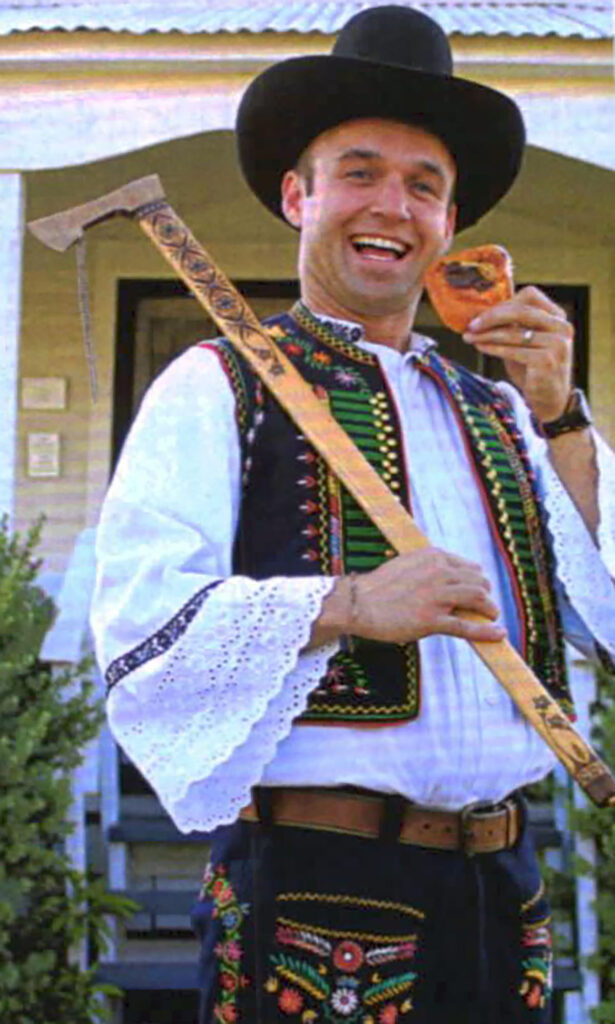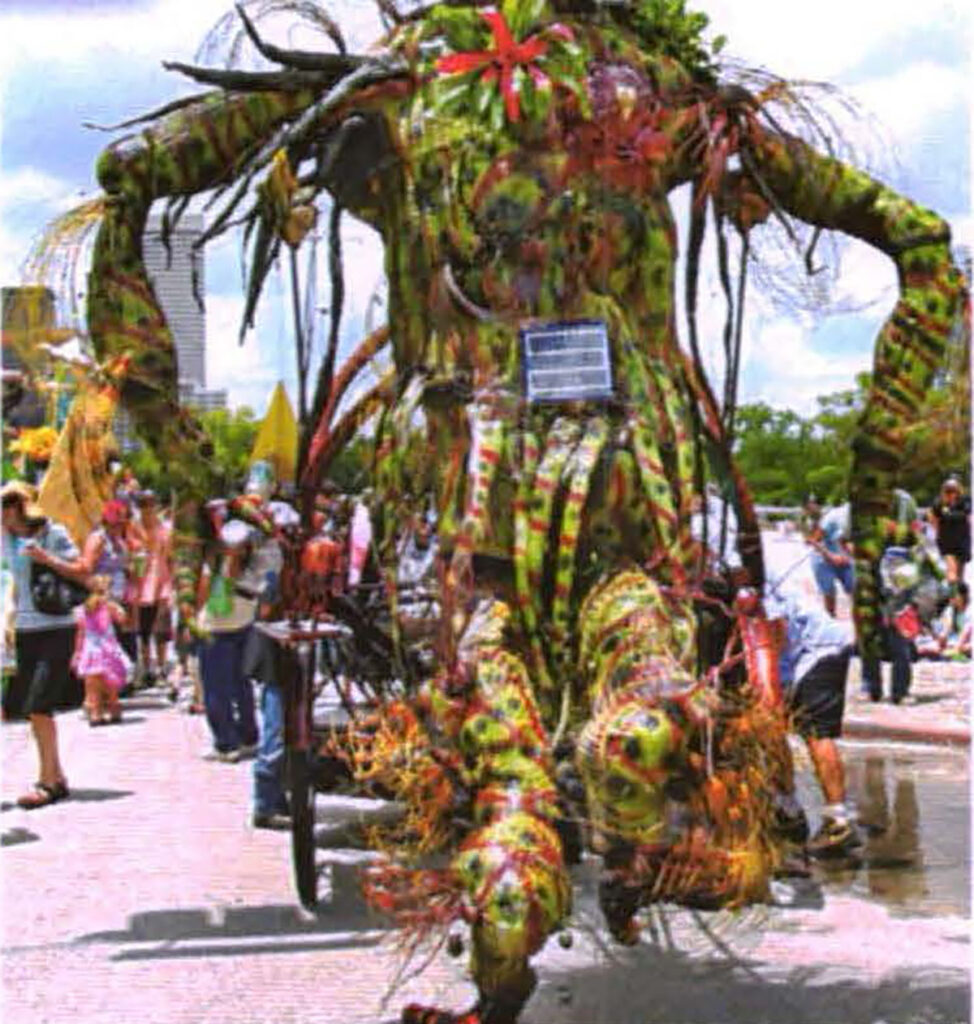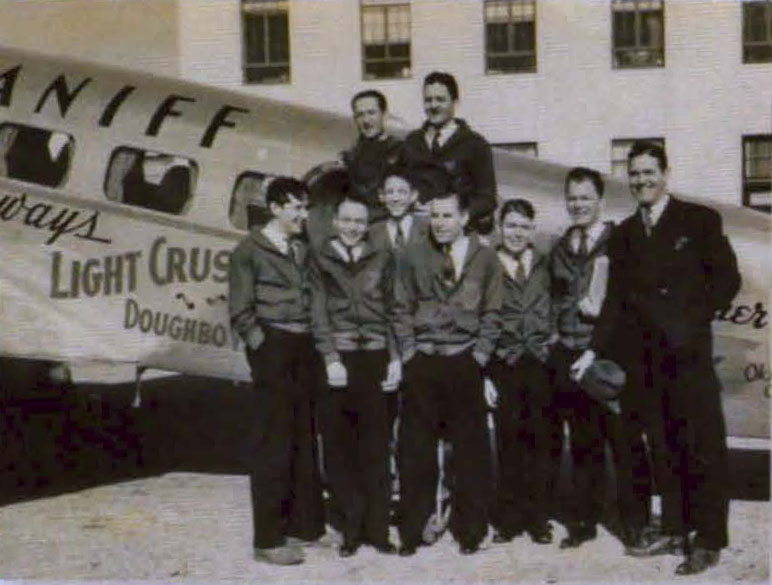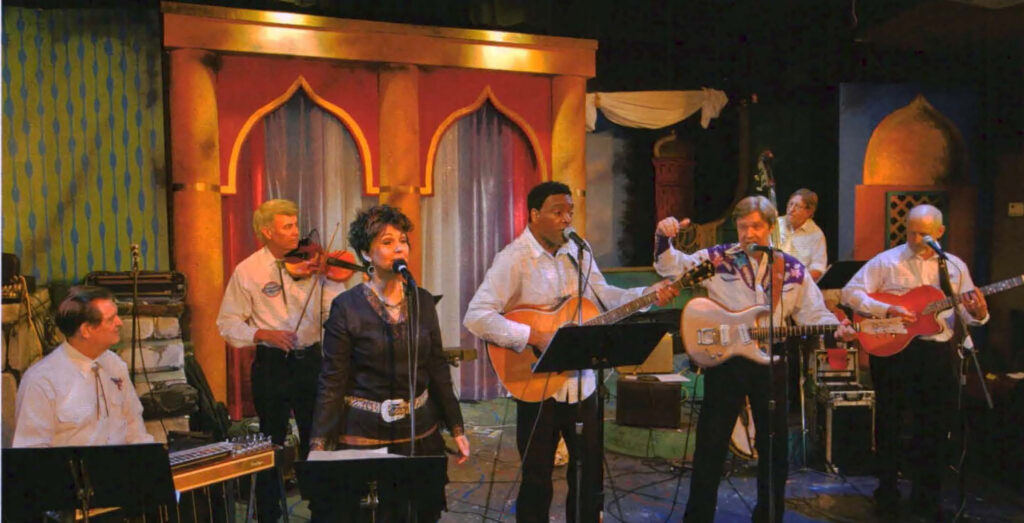Sometimes you can spy a whooper or two in the marsh through a free telescope on the refuge’s observation tower. In a good year, you’ll see bluebonnets so thick they’ll look like blue rivers in your photos. Odessa’s Stonehenge has stones placed in the precise arrangement as the stones on England’s Salisbury Plain.
Our vast state boasts treasures around every bend, but some speak most strongly to Texas’ nature history and residents sense of fun. We’ve selected a dozen such iconic experiences to recommend for 2013, admittedly just the tip of Texas’ amazing iceberg.
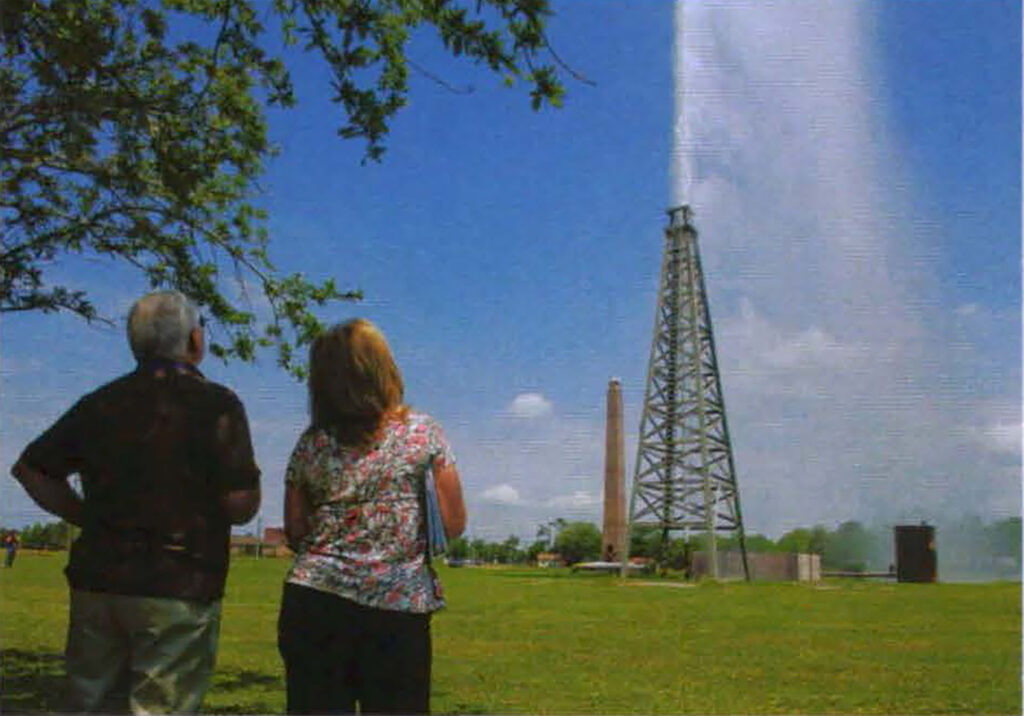
Photo by Stan A. Williams
East Texas
Learn how oil changed Texas
The Spindletop-Gladys City Boomtown Museum, Beaumont. Call 409-880-1750; spindletop.org.
Texas Energy Museum, Beaumont. Call 409-833-5100; texasenergymuseum.org.
On January 10, 1901, the Lucas gusher at Spindletop spewed black gold into the Texas sky, heralding a monuments and enduring shift in the Texas—and world—economy. Celebrate with a pilgrimage to Beaumont, where it all began. At the site of the Spindletop salt dome, a marker tells the gusher’s story. But just a mile north, the Spindletop-Gladys City Boomtown Museum re-creates not only the oil derrick but also the became in 1901. Watch a film on the state’s first oil strike, poke your head into a replica of a tum-of-the-20th-Century saloon, and, on special occasions, watch the re-created boomtown that Beaumont derrick spew a geyser of water into the air.
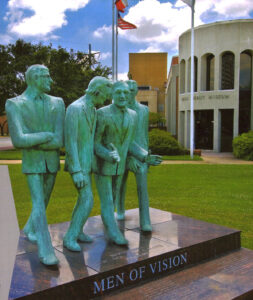
Photo by Stan A. Williams
Then go to downtown Beaumont and learn the science behind the oil industry at the Texas Energy Museum, which explains how prehistoric life turned into oil and how oil is refined into gasoline. You can pretend you’re piloting an oil tanker past Port Arthur, hear accounts of the 1901 gusher in the words of visionary Pattillo Higgins and driller Anthony Lucas, and learn about the many products—from cosmetics to household plastics—that owe their existence to petroleum.
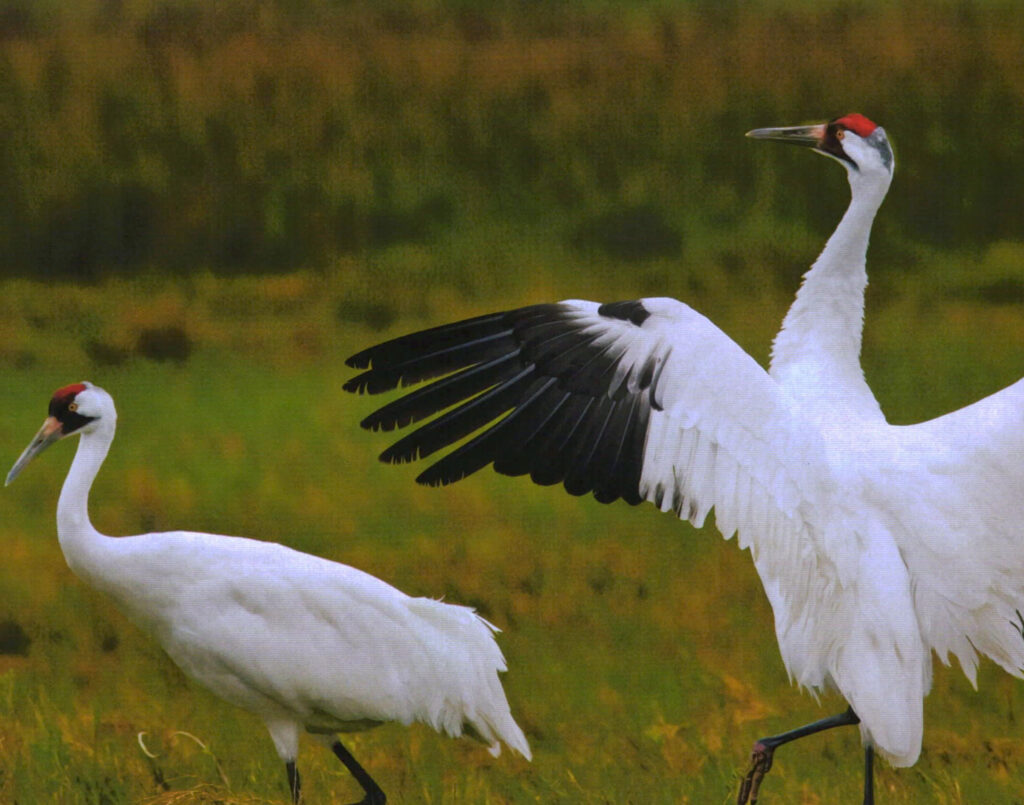
Photo by J. Griffis Smith
The Texas coast
Whoop it up with the cranes
For recommendations on birding boats, contact the Rockport-Fulton Chamber of Commerce (800-242-0071; rockport-fulton.org) or the Port Aransas Chamber of Commerce (361-749-5919; portaransas.org).
Every year, from October through March—and sometimes in April—hundreds of endangered whopping cranes show up to spend the winter on the Texas coast after flying more than 2,500 miles from their summer homes in Canada. The best place to find them? Aransas National Wildlife Refuge, north of Rockport.
Sometimes you can spy a whooper or two in the marsh through a free telescope on the refuge’s observation tower, but for a much better chance to see more than a few birds, book a boat ride out of Rockport or Port Aransas. With a boat, you can get close to watch the birds through binoculars as they hunt for blue crabs in the marshes.
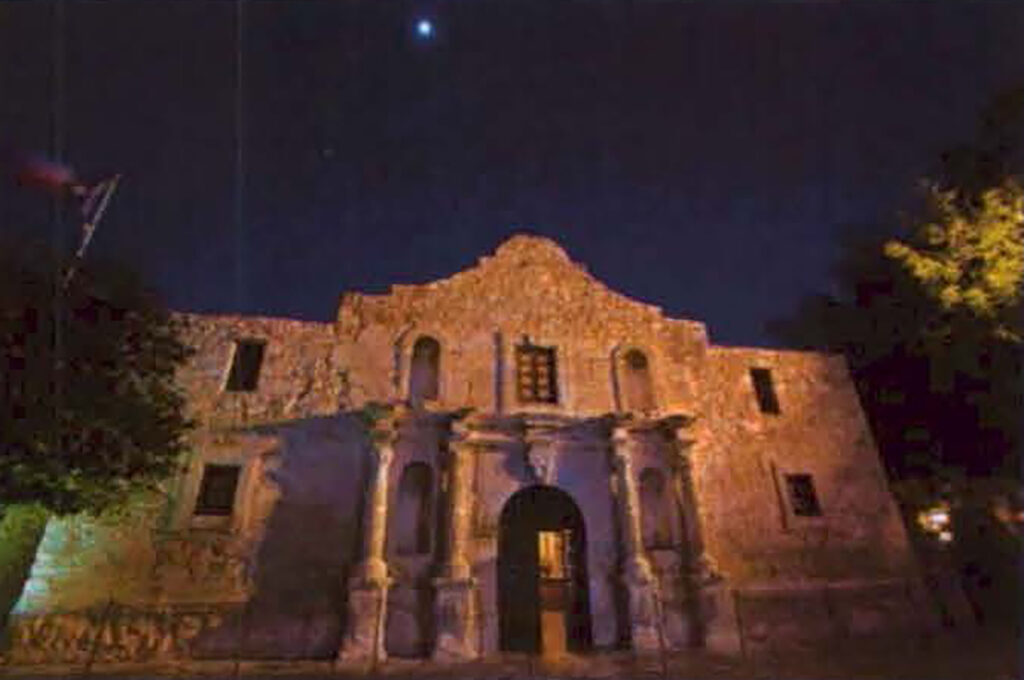
Photo by J. Griffis Smith
San Antonio, Goliad, and La Porte
Get in touch with Texas history
The Alamo, San Antonio. Call 210-225-1391; thealamo.org.
Presidio La Bahia, Goliad. Call 361-645-3752; presidiolabahia.org.
San Jacinto Battleground State Historic Site, La Porte. Call 281-479-2431; thc.texas.gov/historic-sites/san-jacinto-battleground-state-historic-site.
Celebrate Texas Independence Day (March 2) by visiting the big three: the Alamo, Presidio La Bahia, and San Jacinto. More than 2.5 million visitors annually visit the Alamo in San Antonio, where Texian soldiers held out for 13 days in February and March 1836 against soldiers of the Mexican Army led by General Santa Anna. When you visit, take the time to stroll through the garden, where a live oak transplanted here a century ago evokes a sense of living history. Take note, too, of the round hole to the right of the chapel entrance; a cannonball made it.
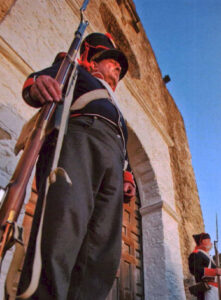
Photo by J. Griffis Smith
About 90 miles east of San Antonio, one mile south of Goliad, you can see one of the world’s finest examples of a Spanish frontier fort at Presidio La Bahia, where Colonel James Fannin and more than 300 troops were massacred on March 27, 1836. Now a National Historic Landmark, Presidio La Bahia includes the original chapel and carefully reconstructed fort, where you can see spurs, weapons from the Mexican army, pottery, and coins from the period, as well as displays about the Texas Revolution. For an unusual lodging experience, stay overnight in the officer’s quarters, which are said to be haunted.
Finally, visit the San Jacinto Battleground State Historic Site east of Houston in La Porte, where on April 21, 1836, Texian troops led by General Sam Houston vanquished Santa Anna’s troops and won freedom for Texas. Tour the San Jacinto Museum of History, at the base of the San Jacinto Monument, then take the elevator 489 feet to the top for a sweeping view of the battleground, the Houston ship channel, and the Battleship TEXAS, a dreadnought that served in the first and second World Wars.
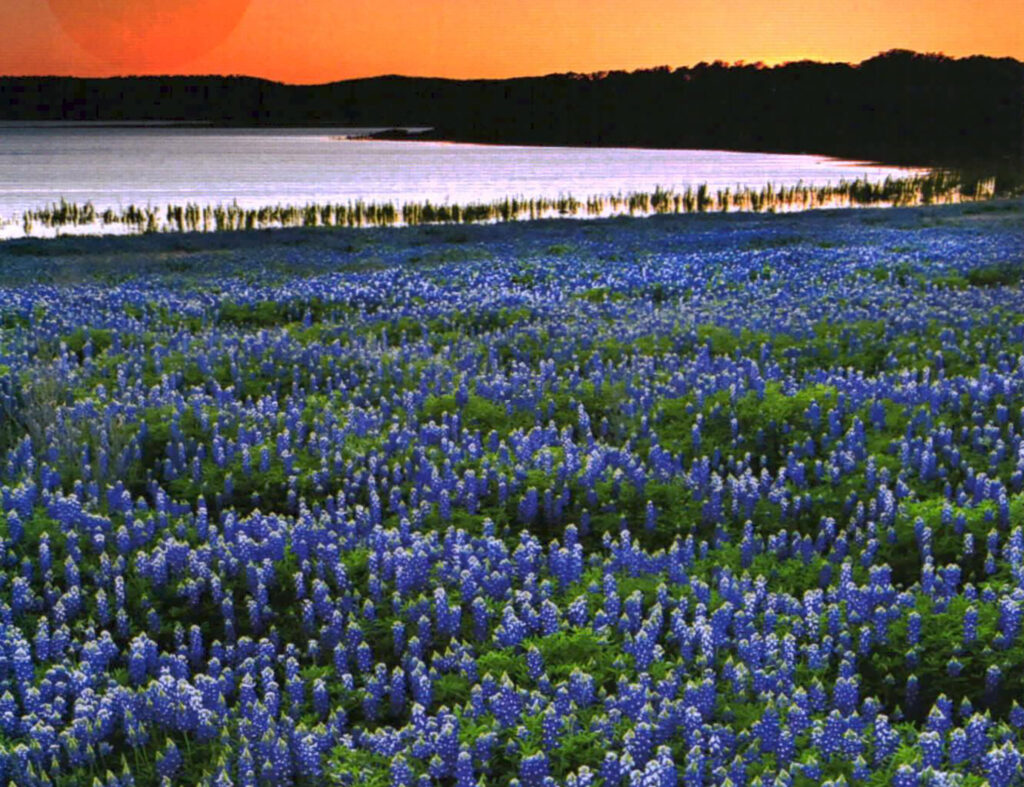
Photo by Joe Lowery
The Hill Country
Revel in the bluebonnets
From Fredericksburg, take Texas 16 13.3 miles northeast to RM 1323, and turn right. Continue east 2.8 miles to Willow City, and turn left onto the Willow City Loop. See fredericksburgtexas-online.com/plan-your-trip/willow-city-loop.
Assuming we’ve had enough rain and the right combination of temperatures and other factors, blankets of wildflowers beautify the Texas Hill Country this time of year. You’ll find them flowing west toward the mountains and southeast to the coastal plains.
One of the most bluebonnet-rich drives can be found on the two-lane Willow City Loop, a 13-mile drive off Texas 16 just north of Fredericksburg. In a good year, you’ll see bluebonnets so thick they’ll look like blue rivers in your photos amid the mesquites, live oaks, pecans, and prickly pear. Remember: Picking bluebonnets, while not technically illegal, reflects a lack of respect for Texas’ official flower. Anyway, you aren’t supposed to get out of your car on this private-property road, where there’s a good chance you’ll have to slow down for a cow or two.
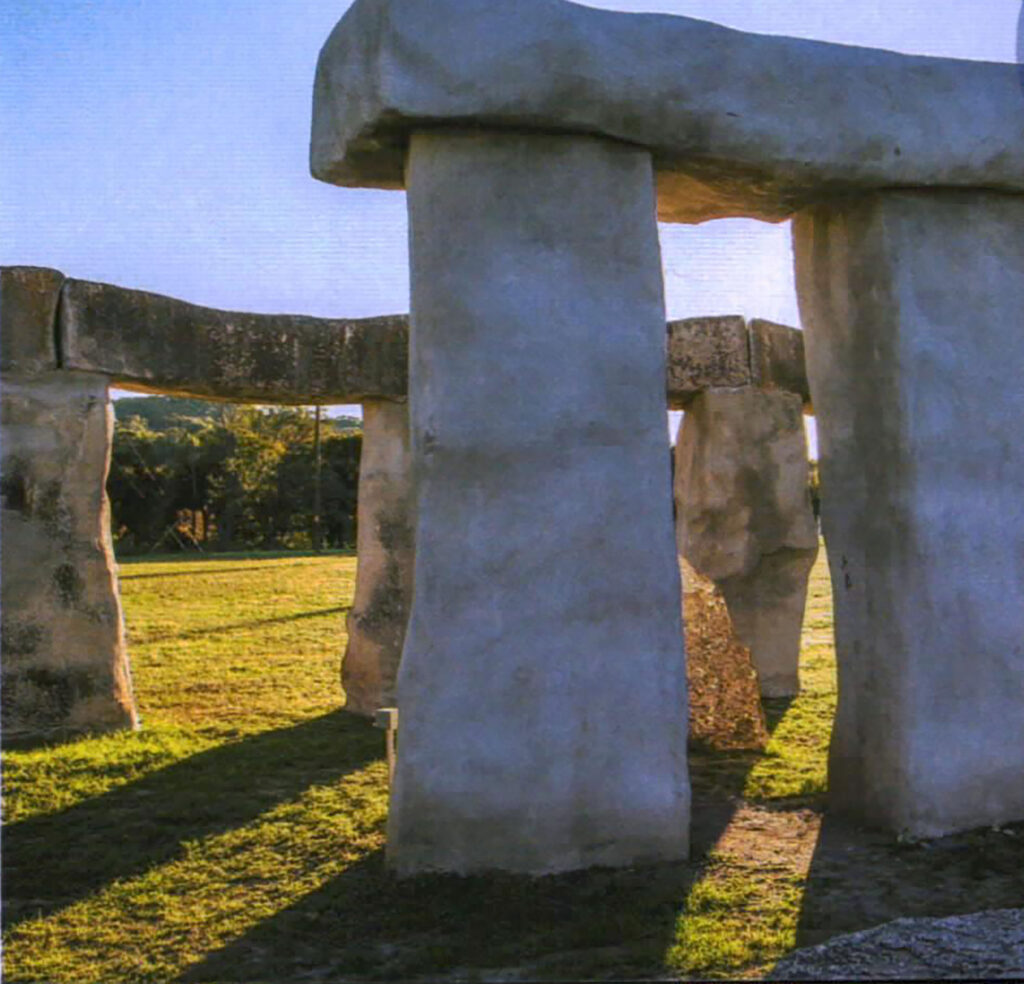
Photo by Will Van Overbeek
Odessa and Ingram
Texas’ Stonehenges rock
Ingram’s Stonehenge II, Ingram. Call 830-367-5121; hcaf.com.
Odessa’s Stonehenge, Odessa. Call 432-552-3286; utpb.edu.
Perhaps nothing speaks to Texas ambition as much as the fact that our state contains no one, but two copies of England’s intriguing, mystifying Stonehenge.
Hunt landowner Al Shepperd and his neighbor Doug Hill built one in 1989, making good use of a chunk of limestone left over from Hill’s patio project. When Shepperd sold the land years later, the Stonehenge replica—along with recreations of two Easter Island heads—were moved to Ingram, where they now sit on the campus of the Hill Country Arts Foundation at The Point (also a delightful place to see indoors and outdoors plays).
In West Texas, Odessa has a Stonehenge of its own on the campus of the University of Texas of the Permian Basin. In 2004, Associate Professor of Art Chris Stanley, whose students had been building small Stonehenge replicas as part of their coursework, teamed up with community leader Richard Gillham and the owners of TexaStone Quarries to build a Stonehenge on a larger scale. About 2/3 as large as England’s, Odessa’s Stonehenge has stones placed in the precise arrangement as the stones on Salisbury Plain, and it’s illuminated at night.
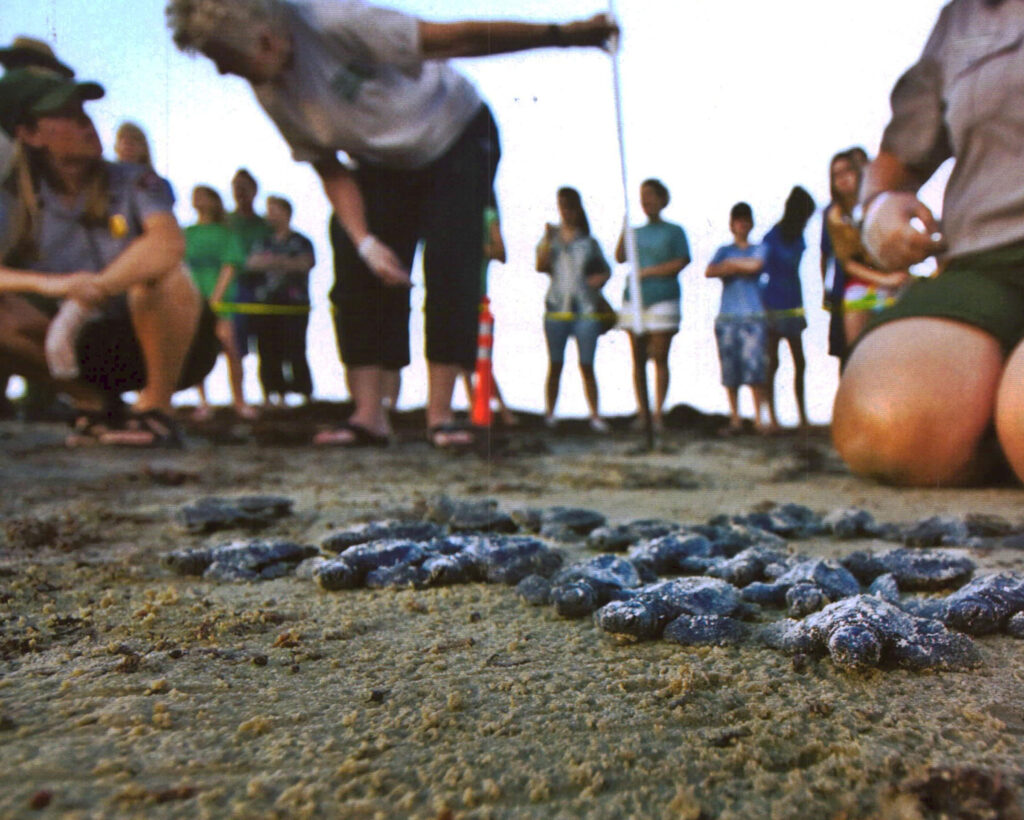
Photo by J. Griffis Smith
Texas Coast
See the sea turtles
On Corpus Christi’s North Padre Island, rangers at Padre Island National Seashore collect the eggs and release the hatchlings. Call the hotline at 361-949-7163; nps.gov/pais. On South Padre Island, call the hotline of Sea Turtle Inc., 956-433-5735; seaturtleinc.org.
A magical thing happens up and down Padre Island from May through August. Kemp’s ridley sea turtles emerge from the Gulf of Mexico, dig nests, lay and bury eggs, then scurry back into the waves. It’s an awesome thing to watch as the mother turtle digs a hole, deposits eggs the size of ping-pong balls—more than 100 sometimes—then uses her flippers to cover the nest with sand, ignoring crowds that often gather to watch.
Because Kemp’s ridleys are endangered, local turtle rescue groups stand ready to quickly retrieve the eggs, incubate them for 45-50 days, and release the hatchlings back to the Gulf. To witness these releases, check release hotlines daily (because nobody knows exactly when the turtles will hatch).
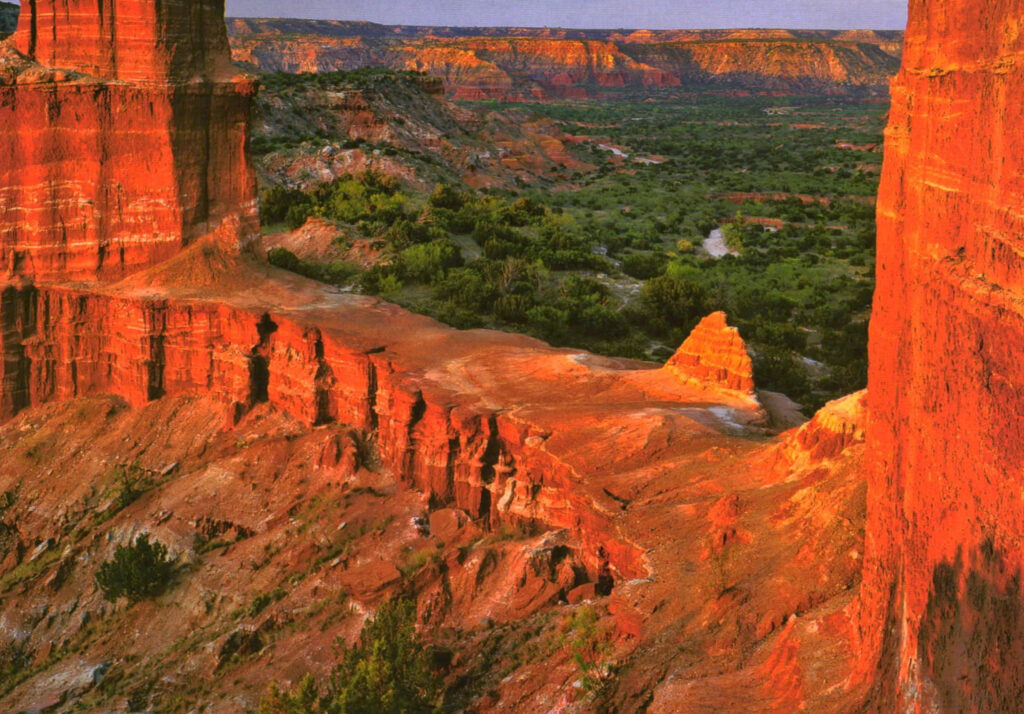
Photo by Laurence Parent
The Panhandle
Check out Palo Duro Canyon
Palo Duro Canyon State Park, Canyon. Call 806-488-2227; tpwd.state.tx.us/state-parks/palo-duro-canyon.
It’s hard to find a horned toad in Texas anymore, but you’ll have a decent shot during the summer months in Palo Duro Canyon, the gem of Texas’ Llano Estacado, south of Amarillo near Canyon. Here you’ll find Texas’ answer to the Grand Canyon—at 29,182 acres and approximately 120 miles long, Palo Duro is the second-largest canyon in the United States. Water erosion formed this canyon some 90 million years ago; today it’s 800 feet deep in places and streaked with red, yellow, purple striations of clay, mudstone, sandstone, and gypsum.
In the 18th Century, when hundreds of thousands of buffalo roamed the Panhandle grasslands, the canyons were home to the Comanche and Kiowa. The best way to explore Palo Duro is the way they did, on horseback. Bring your own horse or rent one from the stables at Palo Duro Canyon State Park, then hit 1,500 acres of trails. You’ll find special camping areas for equestrians along with regular campsites—some primitive, some with electricity—and seven cabin for rent, including several that were built in the 1930s by the Civilian Conservation Corps.
From June through August, you can also enjoy a performance of TEXAS, the musical drama staged outdoors in an amphitheater carved from a canyon wall.
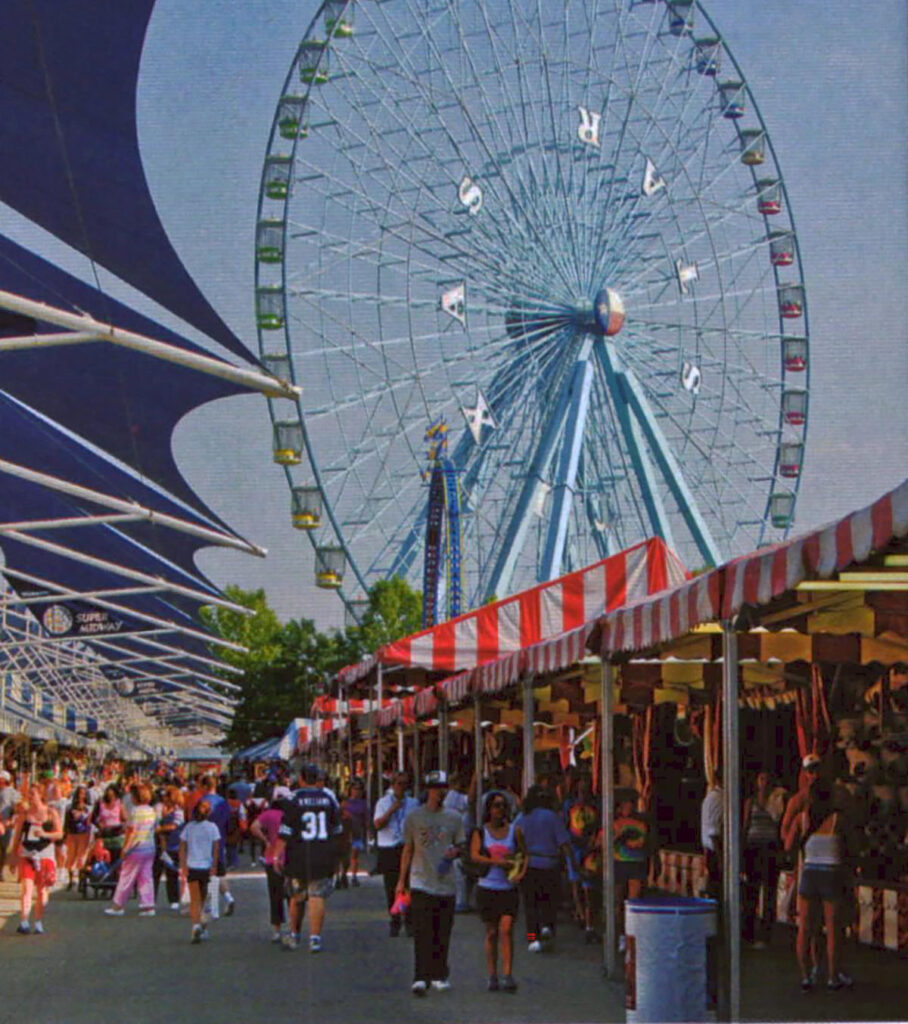
Photo by Michael Amador
Dallas
Enjoy the State Fair
The 2013 State Fair of Texas takes place September 27-0ctober 20 in Dallas. See bigtex.com.
The state Fair of Texas never fails to induce a state of exhilarated exhaustion, a happy condition achieved only by stuffing yourself with corny dogs and funnel cakes, whirling on rides, sitting in a just-off-the-assembly-line car, watching pig races, and joining thousands of fellow Texans to enjoy music as the moon rises.
Start with the beautiful Art Deco setting at Dallas’ Fair Park. Add a midway, farm animals, auto shows, music, cooking and crafts competitions, and this three-week festival starting in late September lives up to its more-than-a-century-old reputation. On October 19, 2012, the iconic 52-foot cowboy known as Big Tex, whose “Howdy, folks” has greeted fairgoers for decades, was destroyed by fire. At press time, plans are afoot to restore Big Tex, so the 2013 fair will be the perfect opportunity to welcome him back.
What’s the best part of the fair? Maybe it’s watching a toddler’s face as that first-ever ride starts to turn. Maybe it’s finding out what this year’ vendors have decided to deep-fry (last year: jambalaya). Maybe it’s seeing a 4-H kid asleep with his cow in the barn. The Fair has something for everyone.
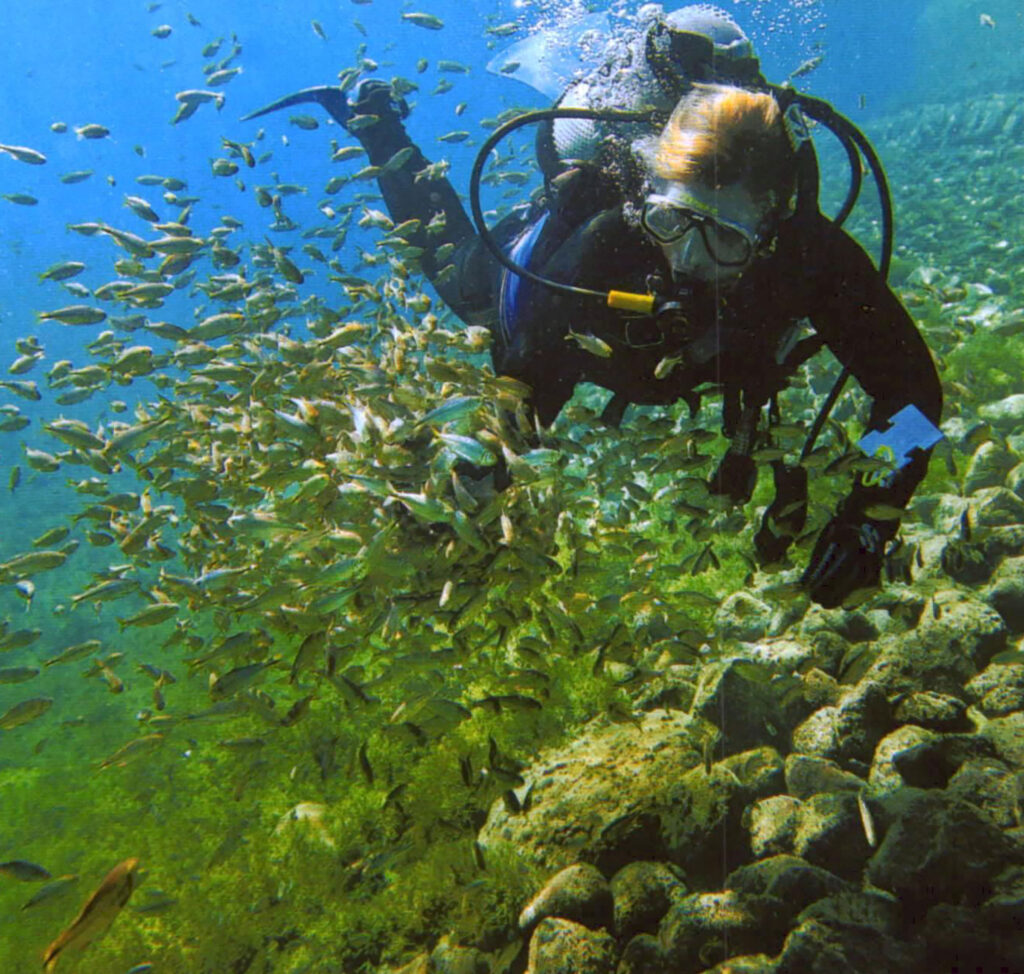
Photo by Erich Schlegel
West Texas
Beat the heat at Balmorhea
Balmorhea State Park, Toyahvale. Call 432-375-2370; tpwd.texas.gov/state-parks/balmorhea.
Balmorhea State Park’s 1.75-acre, spring-fed pool is nature’s answer to Texas’ summer sun with a constant temperature between 72 and 76 degrees. Set against the deep blue West Texas sky in the yucca-dotted foothills of the Davis Mountains, it feels a whole lot like paradise.
It takes time to drive out to this spot in little Toyahvale, about halfway between Alpine and Pecos on Texas 17, but a dip in these clear, blue-green waters, with tiny fish nipping harmlessly at you as you float, will wash away any road fatigue. The pool, open year round and fed by San Solomon Springs, thrills scuba divers with its 25-foot depth.
Built by the Civilian Conservation Corps in the 1930s, the park offers motel-style accommodations, some of which have kitchens.
East Texas
Explore spooky Caddo Lake
Caddo Lake State Park, Karnack. Call 903-679-3351; tpwd.state.tx.us/state-parks/caddo-lake.
Do ghosts dwell amid the murky, mysterious tentacles of Caddo Lake? Certainly Caddo offers a ghostly setting, its swamps and bayous studded with bald cypress trees shrouded with Spanish moss.
Straddling the Texas-Louisiana border in northeast Texas, Caddo, the state’s only natural lake, exhibits a dark beauty that a man-made lake could never summon. You might see a great blue heron or alligator as you explore the canopy in a canoe or kayak. Consider hiring a guide to help you through this serpentine tangle of waterways, or in the town of Uncertain, book a trip aboard the Graceful Ghost paddle-wheeler, a replica of an 1800s steamboat.
Rumors persist that Bigfoot, whomever or whatever that may be, lives around Caddo Lake. No telling. But bass live here for sure, and you can fish for them (bring your own gear or borrow
a pole) in Caddo Lake State Park’s Big Cypress Bayou. The park also offers hiking trails, and you can pend the night
in a 1930s cabin. If you dare.
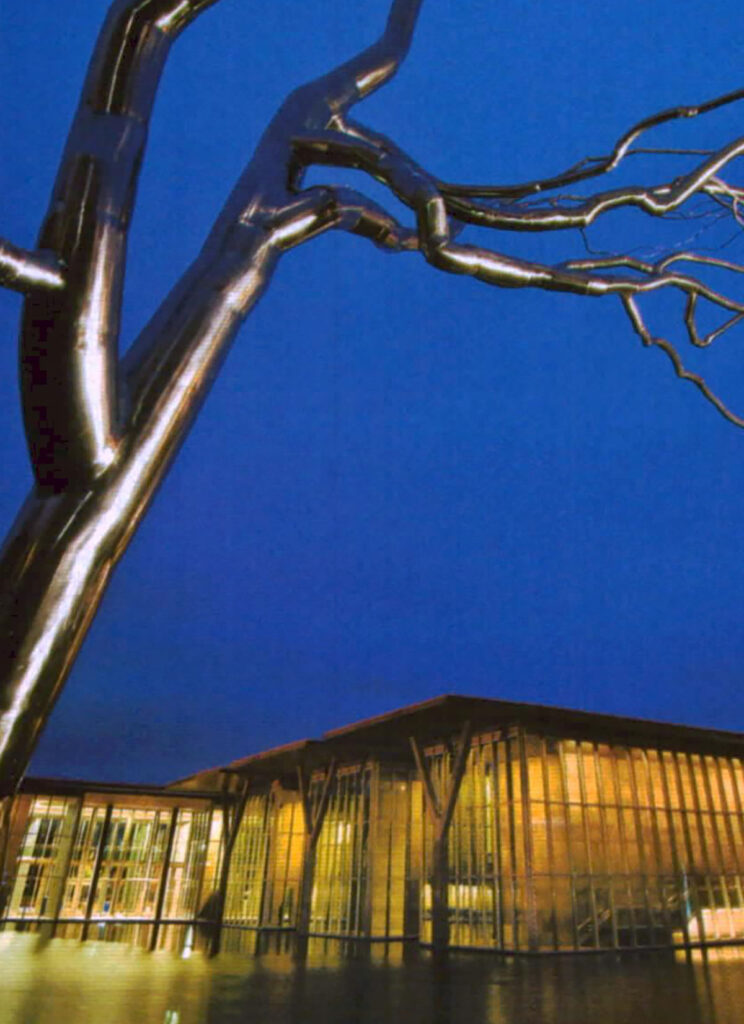
Photo by J. Griffis Smith
Dallas, Fort Worth, and Houston
Art in the cities
Perot Museum of Nature and Science, Dallas. Call 214-428-5555; perotmuseum.org.
The Dallas Arts District, thedallasartsdistrict.org.
The Fort Worth Cultural District, fwculture.com.
The Houston Museum District, houstonmuseumdistrict.org.
Nature crafted many of Texas’ treasures, but humans made some, too. Dallas, Fort Worth, and Houston all boast world-class museums. In Dallas, the new Perot Museum of Nature and Science fills its halls with engaging multimedia exhibits, computer animations, interactive experiences, films, and, of course, big dinosaurs. While you’re in Dallas, also check out the nearby Nasher Sculpture Center, Dallas Museum of Art, and the Crow Collection of Asian Art.
Then head over to Fort Worth for the Kimbell Art Museum, Modern Art Museum of Fort Worth, and the Amon Carter Museum of American Art, clustered on a triangle of land west of downtown. Lunch at the Modem’s sleek Modern Cafe, with tables overlooking a placid reflection pool designed (like the museum itself) by architect Tadao Ando, is the perfect midday break.
Houston holds the state’s largest museum district, where you can easily walk from the Museum of Fine Arts, Houston, to more than a dozen diverse institutions such as the Children’s Museum, the Houston Museum of Natural Science (with its new Morian Hall of Paleontology), and the newest entry, Asia Society Texas Center, which explores not only fine arts but also Asian politics, education, and health care.
Big Bend
Search for the Marfa Lights
Marfa Chamber of Commerce, Marfa. Call 800-650-9696; marfachamberofcommerce.org.
Big Bend National Park. See nps.gov/bibe.
Big Bend Ranch State Park. See tpwd.state.tx.us/state-parks/big-bend-ranch.
Since 1993, the year of the first recorded sighting of the famed Marfa Lights, visitors to the Big Bend region of Texas have tried to see them—and if successful—have tried to explain them.
The lights, those who’ve seen them say, pulse, twinkle, and move over the desert as you face the Chinati Mountains. They’ve been described as white, orange, or yellow. Are they ghosts? Space Travelers from afar? Native American spirits? Moonlight reflecting on veins of mica? The truth is that nobody really knows what causes them. On a clear night, park at the official viewing area on US 90 about nine miles east of Marfa, and look south toward the Chinati Mountains on the Mexico border. If you see lights of any color moving around, either near or distant, you may count yourself among those fortunate enough to claim they’ve seen the Marfa Lights.
No Marfa Lights? Then go with the natural kind. The stars at night shine big and bright in West Texas’ two major parks: Big Bend National Park and Big Bend Ranch State Park.
